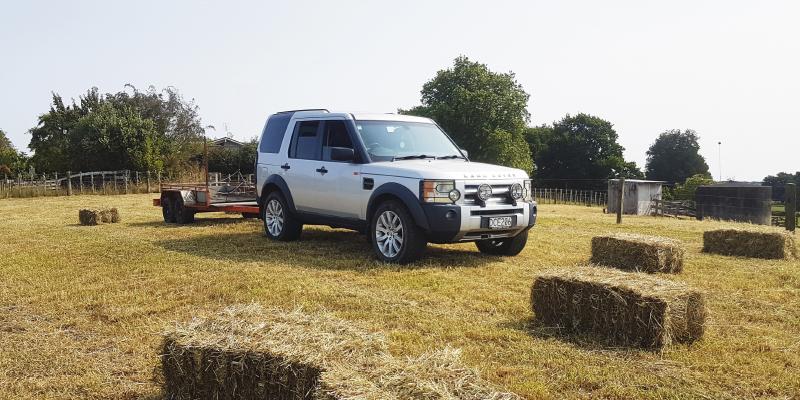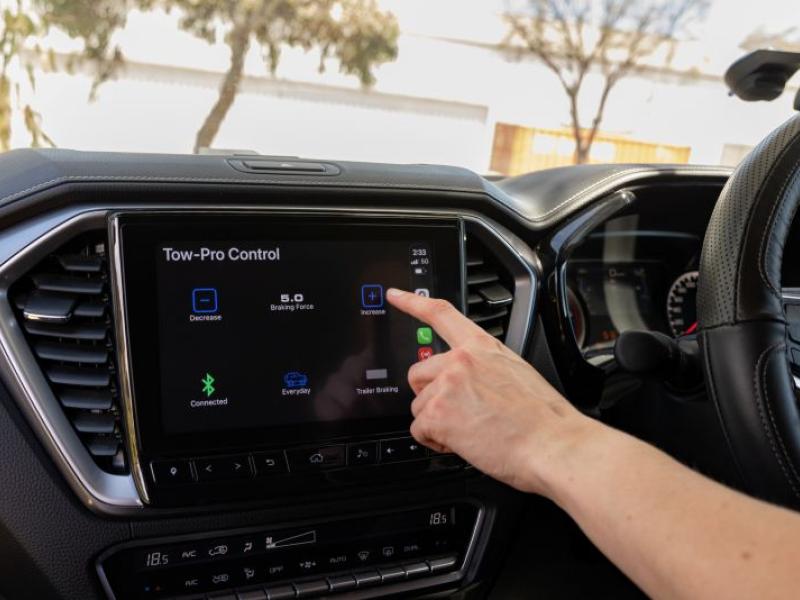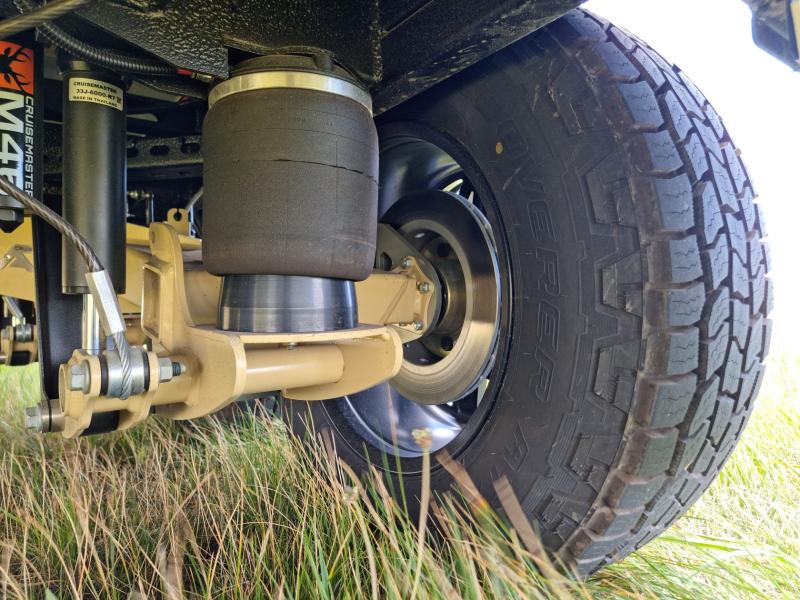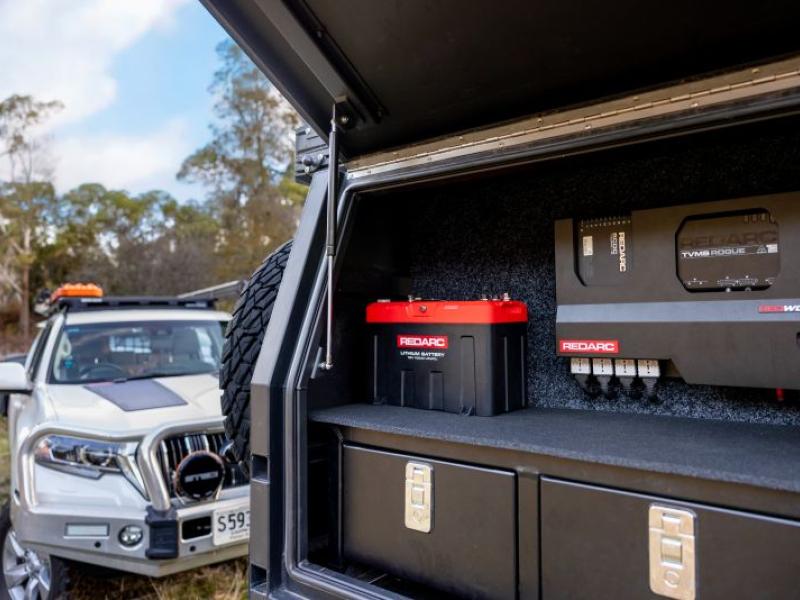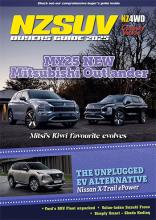Long-time NZ4WD contributor Ashley Lucas has been towing things since he was in his teens. Here he shares some of the lessons he has learned through the years.
Over the years I have done a lot of towing around the country, learning the skills from my father at an early age. Don’t let anyone tell you different either. There is definitely both skill and technique required for correct, safe towing.
I have towed vehicle transport trailers loaded with vehicles, tractors, small diggers and silage bales, furniture trailers, tandem and single axle trailers with logs, timber, hay, and concrete and much more besides. I have even towed caravans, but don’t recall ever towing a decent sized boat. Whatever the load, it is all about getting the balance right to ensure safe towing.
An important lesson learnt in my teenage years was correct loading of the trailer and to ensure the balance is ‘just right.’ Towing a single axle trailer behind my father’s 1957 SWB Land Rover, the load was too far back on the trailer and as I increased speed the trailer started to sway wildly around. I managed to get it back under control by accelerating (if that is indeed possible with a 2.25 Land Rover) but that scary moment taught me a valuable lesson to load a trailer correctly.
Assume the position!
Ideally any load should be positioned as close to the axle as possible with about 10-12 percent of the total weight (trailer and load) on the tongue or tow bar. If the load is too far back it will cause the trailer to sway and too far forward puts too much load on the vehicle and if excessive makes the steering rather light.
Also, because trailers are not usually used regularly you should always do an inspection of lights, tyre pressures, safety chain and even the towing hitch before venturing off. Tyres on a tandem trailer with no weight on it may look as though they are all holding air but you need to check.
Some of you might have seen ‘truckies’ get their iron bars out and go around the truck tyres giving them a good whack. Why you might well ask? The reason is simple. A flat tyre will give off a different sound.
So if a tyre pressure is not handy then a good kick or hit with a bar or your boot will quickly tell you if there is or isn’t enough air in the tyre.
A right balls-up!
In New Zealand we can have several different tow ball sizes, most common being 1-7/8ths and 50mm but also occasionally there is a slightly larger 2-5/16ths ball which is an American sizing. Standardising the ball size here in New Zealand as they have done in other countries like the UK, EU and Australia has been the subject of debate for many years but is not likely to happen anytime soon. Therefore it is very important to ensure the correct tow ball size is used for the specific trailer coupling or hitch.
Even excessive wear on either or both the coupling and tow ball means the trailer can bounce off if it hits a bump in the road. Again, past experience ensures I check that the coupling and tow ball are a good fit with each other. And the reason goes back to when I was young and had been out helping a community group cut Christmas trees one fine summer’s day.
I was returning to town with a trailer load of trees to sell when going down a hill the trailer hitch bounced completely off the ball. Fortuitously the safety chain kept the trailer in check and the drawbar went under the Land Rover as I came to a stop. It transpired both the coupling and tow ball had worn over years and as a result of a good pothole bounce the trailer came off. Both – needless to say – were replaced.
A good practice to get into
Just as regular maintenance is important on your 4WD, so it is for your trailer. Many trailers are only used occasionally and spend a lot of time idle then are suddenly put to work. Giving your trailer a good check over between Warrant of Fitness times can save you time and money later.
Like?
Well, like jacking the trailer up and spinning the wheels to check wheel bearings and listening for rumbling noises is a good practise to get into. More than once I’ve experienced wheel bearing problems over the years. Once when returning from a trip to the dump a wheel bearing on my trailer disintegrated. To get the trailer home I used an old aluminium drink can found on the side of the road, crushing it up to fit the gap left from the departed bearing.
Not pretty or recommended but it got the empty trailer home that day!
Another occasion I was at the workshop when a local mechanic and garage owner popped in. I had the trailer there and he asked if I had fixed the wheel bearing yet? Ah, what wheel bearing? It transpired that a week or two previously he was waiting at the lights on one side of the road and I had gone the other way with the trailer and he had heard the distinctive rumbling sound of a worn bearing.
Jacking up the trailer and spinning the wheel did indeed show a bearing that definitely needed replacing. If he hadn’t stopped by when he did I would have been in for a bad weekend as I was about to head away with the trailer.
Ashley’s towing tip sheet
Other tips with regards to towing are:
• Allow more time to accelerate and allow more time to overtake.
• Allow greater distances for stopping.
• On long downhill sections use the gearbox and lower gears (even with an automatic) to slow you down or you will overheat your brakes and end up with brake fade, which is very dangerous.
• Take a wider line when turning as the trailer will ‘cut’ the corner.
• Avoid sudden movements as this can lead to trailer sway. If it does happen try to avoid touching the brakes.
• Learn how to back a trailer. Reversing is counter-intuitive when you are first learning so it helps having someone outside the vehicle to guide you. Sometimes it is easier to use low 4WD to back a trailer.
Finally, if the trailer you are towing is fitted with brakes and seems excessively heavy to tow, stop and check that the handbrake has been released properly otherwise you can and probably will cook the brakes.
Also take care when unhooking the trailer that it is not on a slope and at risk of running away. I still have to replace a fence post because, once upon a time – you guessed it! – that’s exactly what happened to me!

